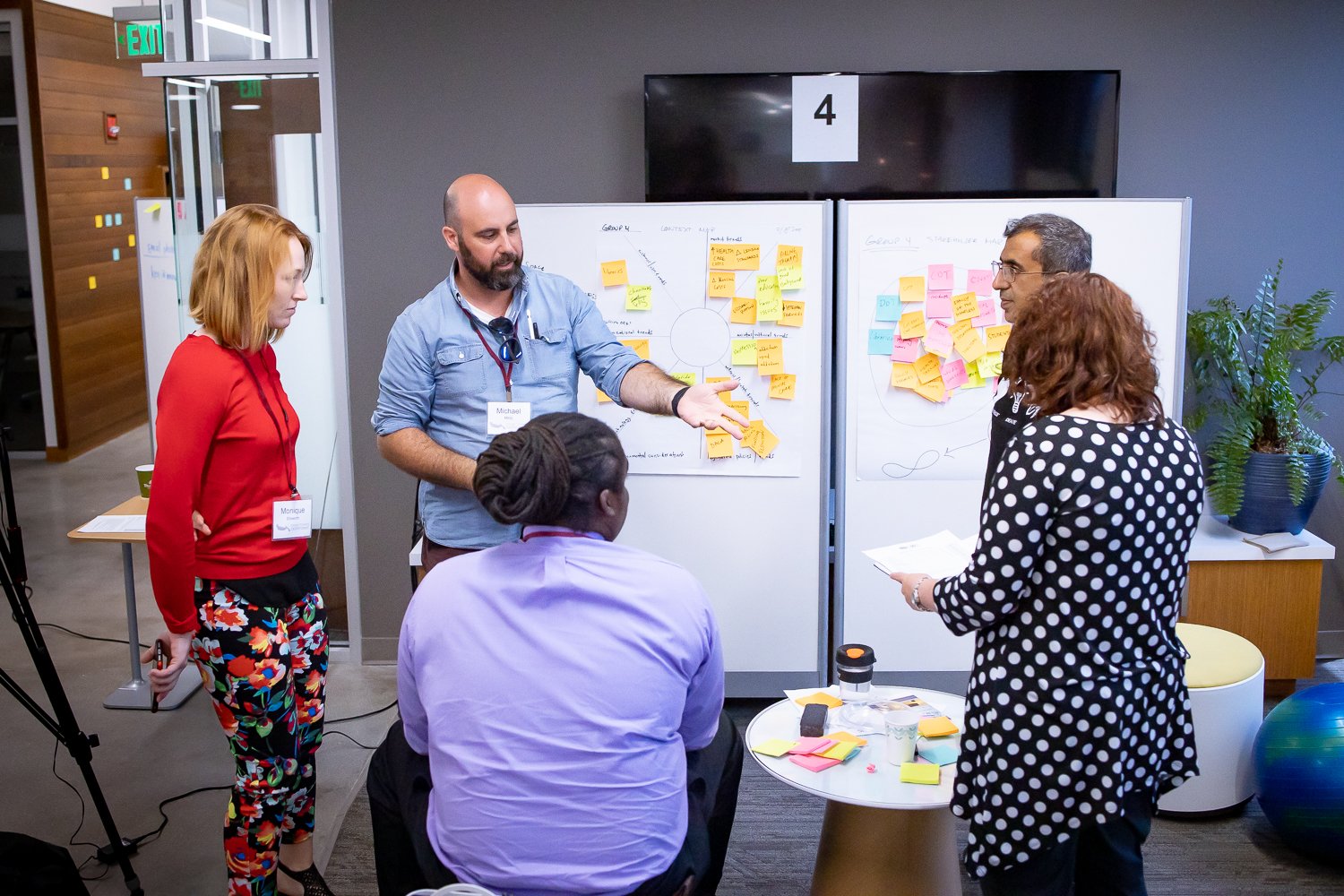
Scientific Innovation Strategies:
Design Sprint
Empathize
Understand the Problem
To design well, we start with the problem and fully understand it before jumping into solutions. In human-centered design, we emphasize what each person is experiencing. We have to map who those stakeholders are so that we can then learn about how the problem is affecting them, learn about what external factors affect them, and intentionally seek to empathize.
Be sure your team has selected a HMW question to help focus your work moving forward.
EMPATHY
Understand the way people experience the problem and truly connect with them.
SCIENCE
Understand the fundamental biological problem and scientific tools available.
Who is impacted by this challenge? Stakeholder mapping can help us map the ecosystem of people who are affected and help us organize them by how directly the experience the problem.
Stakeholder mapping is an exercise that helps teams focus on the right people- those experiencing the core of the problem. The purpose of this exercise is the discussion it generates. You may want to revisit your stakeholder map as you learn more about the problem and as you refine and reframe your HMW.
Working on your own, write down as many stakeholders as you can think of, putting each on their own sticky note.
Be as specific as possible. For example, rather than “doctors” use “primary care physician” and “surgeon” to distinguish stakeholders who are affected in different ways.
Try not to list companies, groups, or entities. Think of a specific person at that company or in that group.
—————————————————————————————————————————————————————————-
Once everyone has filled their sticky notes, begin discussing with your teammates and placing on the stakeholder map. Those directly affected by the problem are placed at the center. Those who are less affected are placed farther from the center.
As you go, consolidate duplicates, and add as you think of new stakeholders.
Jot down discussion notes and insights to the side of your map so the whole team can reference them.
WHO?
Stakeholder Mapping
“If I had an hour to solve a problem I'd spend 55 minutes thinking about the problem and 5 minutes thinking about solutions.”
― Albert Einstein
CONTEXT MAP
Context mapping incorporates the environmental factors affecting a design challenge. Beginning individually, write down different factors and trends that influence the problem as you start to understand the challenge better. These could be societal factors/attitudes, environmental aspects, market trends, regulatory constraints/changes, or aspects of the technology landscape.
Placing the design challenge in the center of the map, begin placing and grouping your sticky notes by category/similarity. Discuss with your teammates as you organize your map. If you need to create new categories for the context map, go ahead! Cluster and label them. Don’t let the worksheet constrain you; it’s there to get you started and get the discussion going.
Create a Plan
Literature Review
Leverage qualitative research and survey-based research from others to complement the interviews you conduct yourself.
Examine high-quality peer-reviewed literature. For a guide on how to read and assess an article, the University of Toronto has a great guide here.
Look at both the problem and existing solutions, including efficacy and clinical outcomes. Look for themes and comparisons.
Stay organized! Share your notes with the team. Note sources, keep links, and record dates and times of interviews.
Summarize key insights on your whiteboard.
Based on your HMW, stakeholder map, and current knowledge of the problem, begin to formulate a plan with your team. On your whiteboard, list the insights you hope to gain, the people you would like to interview, and how your team might reach them. Assign who is going to complete which parts of your plan.
Interview key stakeholders, as many as you can reach in the time of the design sprint.
Build a survey with Google Forms, Survey Monkey, or other free online tool, to extend your survey questions to another dozen people online.
Conduct a Focus Group gathering stakeholders together in person or online and having them respond to well considered questions. Promote a discussion between participants to generate more insight.
Search expert databases and reach out to ask for insight, via email or Zoom interview. Here is an example at FSU.
